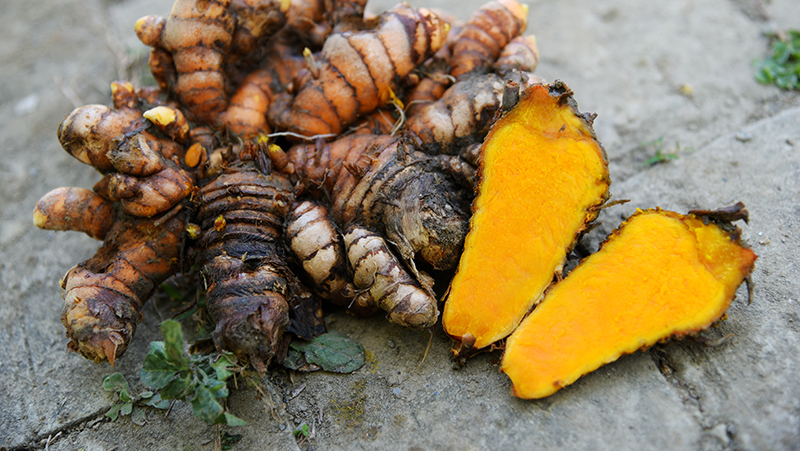Yates Account
Join now
Create a Yates account today!
Sign up to join the Yates Garden Club for monthly e-mails packed with seasonal inspiration, tips for success & exclusive promotions.
Plus if you’re a Garden Club member you can take part in the Yates Growing Community - a blog to share successes, get advice & win prizes in fun challenges along the way!

Forgot password
Enter the email address associated with your account, and we'll email you a new password.
Winter is the season for buying and planting some of the most interesting edible plants. These are the ones that are sold as roots, crowns or bulbs in the cooler months.

This is a traditional European favourite that does particularly well in cool climates. Plant the roots out in a sunny spot into soil that’s been improved with some manure or compost and some Yates Dynamic Lifter Organic Plant Food pellets.
Keep well-watered, especially in the early stages of growth, and prune off excess shoots, leaving about three of the strongest. In good conditions, horseradish will develop a thick, fleshy, pungent taproot that can be harvested next autumn or early winter. Dig out each year, trying to remove all of the roots from the soil, as it will grow from the smallest piece and can become a bit of a weed.
Replant healthy roots to start a new crop. Grate harvested roots and mix with vinegar and mustard to make a pungent sauce. Horseradish is related to cabbages so watch for caterpillars in summer and autumn. Treat with Yates Success Ultra Insect Control.
Asparagus is a slow and long-lasting crop that is worth growing because it tastes so good when freshly cut. Deep, rich soil to which some Yates Thrive Natural Dolomite Lime has been added is ideal. Plant the clump of roots, called a ‘crown’, at the bottom of a 20cm-plus trench.
Gradually fill in as the shoots grow. Clean out old tops when they die down in winter and don’t begin to harvest new spears until the second year. If you want white asparagus, hill soil up to exclude light from emerging spears.
Look after your asparagus and you’ll be able to continue harvesting it for many years.
Rhubarb also grows from a crown. Feed well through the growing season with regular applications of Yates Thrive Fish Blood & Bone Plant Food. A couple of times a year spread some Yates Dynamic Lifter Organic Plant Food as a side dressing.
Begin harvesting stalks – by pulling, rather than cutting – when the clump is well established, but go gently at first. Watch for fungal diseases and use Yates Liquid Copper, if necessary. Stalks will be a better red if the plants are mature, if they’re in a cooler climate and if they’re fed a high potassium fertiliser such as Yates Thrive Rose & Flower Granular Plant Food.
These can be easily grown from the knobbly tubers that are sold as winter vegetables. They grow into tall plants that flower with bright yellow daisies in late summer. Nipping off the flowers at bud stage is said to improve tuber quality but, even if almost totally neglected, the plants will produce a satisfactory harvest each winter. The greatest difficulty comes in cleaning the soil off the bumpy surface. Tubers can be baked, boiled or added to winter stews.
These are tropical plants that do well in warmer areas. The dormant roots are planted in late winter in warm regions, or in spring in cooler areas after the soil has warmed up. In cold regions, they can be grown in a glasshouse but they will need plenty of space. Feed with Yates Dynamic Lifter Organic Plant Food through the growing season and keep well watered. Harvest roots when the leaves die back and the plants enter dormancy, from late autumn to winter.
Both are used in cooking and, increasingly, for their medicinal qualities.
Shallots are small, brown-skinned bulblets with a mild onion flavour that are delicious in stews and casseroles. You can grow shallots from seed, or from bulbs. Sow seed between February and May; germination should take about 2 weeks. For planting bulbs, wait until mid-winter to plant out, for a mid-summer harvest.
Homegrown garlic’s creamy flavour adds a special touch to many dishes. Plant the cloves and after the leaves appear, begin feeding with a liquid plant food such as Yates Thrive Fish Blood & Bone Plant Food. Watch out for black aphids on the leaves – control with Yates Nature's Way Organic Citrus, Vegie & Ornamental Spray – and water evenly throughout the growing season. Pull up the plants (while lifting the bulbs from underneath) after the lower leaves start turning yellow. Make sure you harvest while there are still 5-6 green leaves left up top. Hang them to store in a dry, airy place for a month or so.

















Share
Share this article on social media